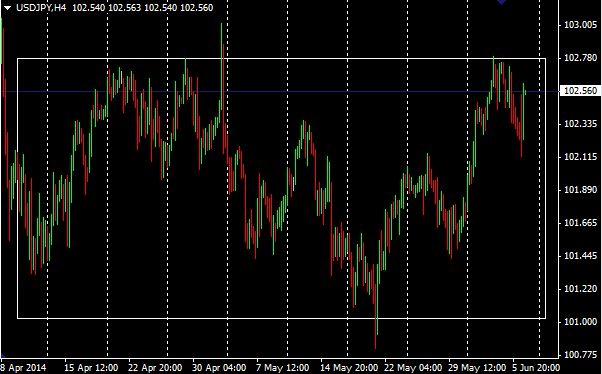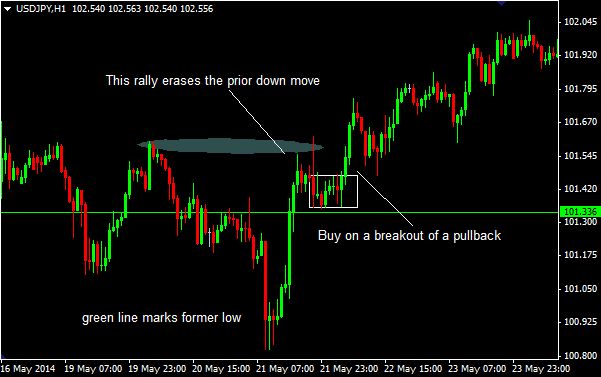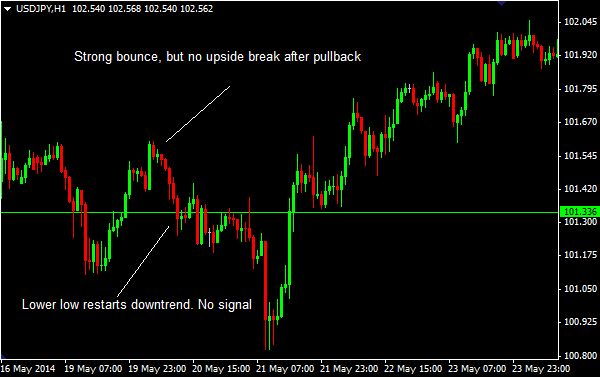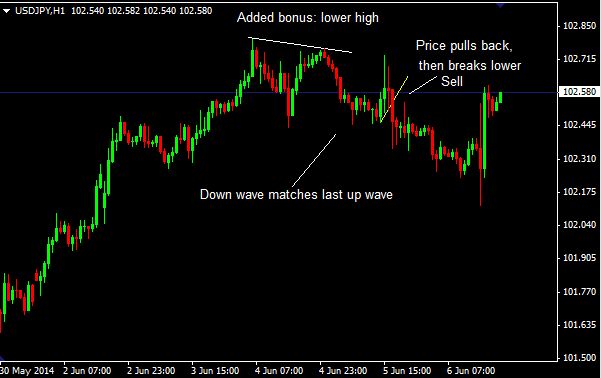Effective Range Trading Method
Most range trading methods I have read about or seen I am not a fan of. But assuming the range is quite large, there is one method I will use to trade ranges, and this is it.
The first step is isolating a range.
Contrary to most range trading methods, with this method we can even trade ranges that are ugly looking. As long as the price is moving predominantly sideways we can use this method.
Figure 1 shows an example of an ugly range in the USDJPY. The price is moving predominantly sideways but we are seeing lots of false breakouts higher near the top of the range, and false breakout lower near the bottom of the range.
Figure 1. USDJPY 4-Hour Chart

That is ok. We still know that the area near the highs is strong resistance, and the area near the lows is strong support.
Therefore, when the price stalls near the low and then reverses higher, or when the price stalls near the high and then drops, that area has held and therefore provides a good trading opportunity.
The Setup
Wait for the price to reach, exceed or get close to either the former high or former low. In figure 2 the USDJPY moves down to the former low, but is trending down when it reaches it.
We wait until the price bounces–it must bounce high enough to erase a prior down wave of the downtrend.
Figure 2. USDJPY 1-Hour Chart

By waiting for a strong bounce we have some assurance the strong selling as stopped, or has at least slowed.
By waiting for a pullback (which must create a higher low than the prior low) and then an upside breakout from that pullback we get some assurance that the uptrend is in place and continuing.
Both these steps need to be there. On the left side of figure 2 we see another strong bounce higher on May 19 around 23:00. But when the price pulls back it creates a short-term lower low which results another downtrend, so there is no signal. Figure 3 shows this.
Figure 3. USDJPY 1-Hour Chart

Figure 4 shows the price as it approaches the top of the range. We are watching for a down wave that matches the prior up wave in magnitude, and then a pullback that makes a lower high.
We get that, and thus sell when the price breaks to the downside out of the pullback.
Figure 4. USDJPY 1-Hour

Final Word
Trying to guess where to get in during a range can be like throwing darts blindfolded. But with this approach we wait for the selling to stop at support and for the price to bounce and show signs it is going to continue higher before taking our trade. This is a fairly high probability approach. When the price is near resistance we wait for the buying to stop and for the price to show some weakness before selling. In this way we get more assurance the price will continue lower in our favor. No method is perfect, and this method will still result in some losing trades, or sometimes we not get an entry signal. Overall though, I prefer to it most other range trading methods I have seen.